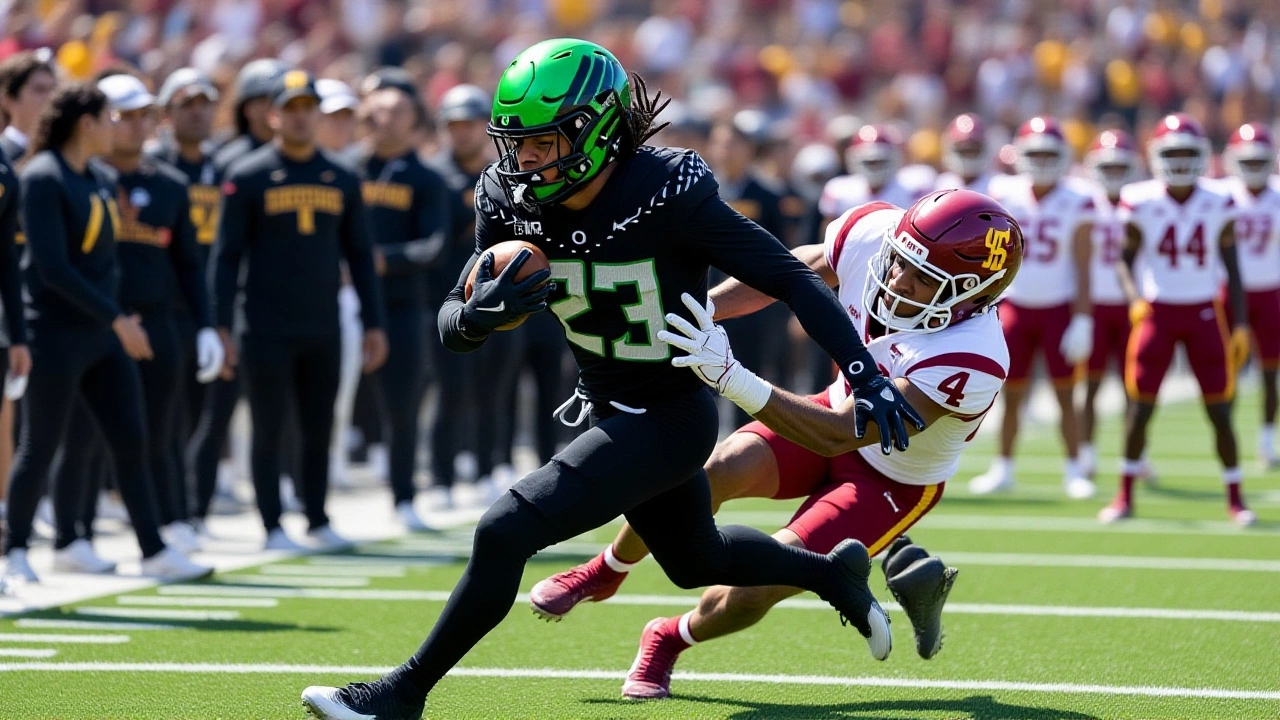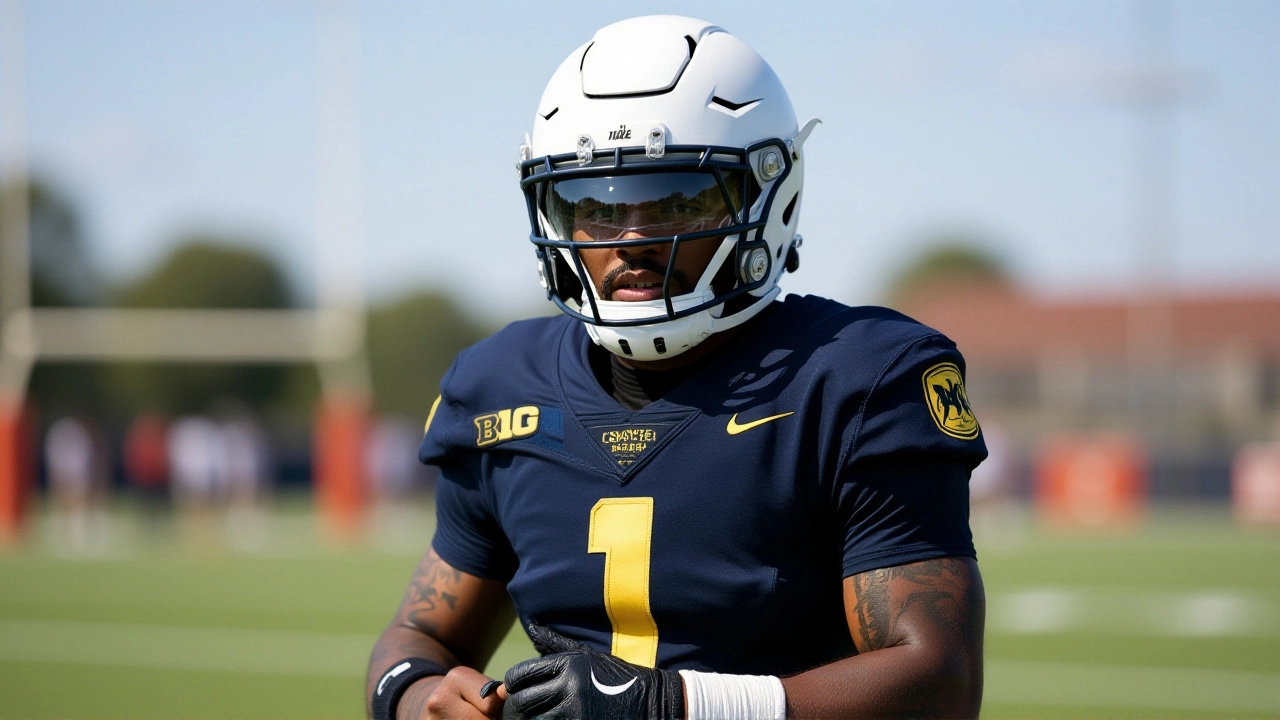On Saturday, November 22, 2025, USC Trojans will step onto the rain-slicked turf of Autzen Stadium in Eugene, Oregon, as 10.5-point underdogs against the Oregon Ducks — a game that may be the last true Pac-12 rivalry of its kind. With kickoff set for 7:30 PM Pacific Time, this isn’t just another Week 13 matchup. It’s a heavyweight collision between two programs racing toward the Big Ten, with everything from playoff seeding to legacy on the line. The Pac-12 Conference, already in its final season before dissolution, won’t be around to see the aftermath. But the stakes? They’re as real as the Oregon wind howling through the stands.
The Defense That Won’t Budge
Oregon Ducks defense is the quietest terror in college football. Ranked third nationally in total defense and dead-first in passing defense — allowing just 127 yards per game through the air — they’ve held opponents to an absurd 13.8 points per game. That’s not a fluke. That’s discipline. That’s Dan Lanning’s system, honed over three seasons, turning Autzen into a defensive fortress. Their secondary? Lockdown. Their front seven? Relentless. And they’ve done it without a single targeting penalty in the last six games — a testament to the new NCAA rules implemented in August 2025, which both teams have adapted to, albeit with different results: Oregon has just three targeting calls all season; USC has five.Meanwhile, USC Trojans defense isn’t elite, but it’s smarter than you think. They allow 21.7 points per game — not bad, especially when you consider they’ve faced three top-10 offenses. Their red zone defense has tightened up. And when the game’s on the line? They’ve shown grit. But they’re not built to out-skill Oregon. They’re built to outlast them.
Offense: Balance vs. Breakaway
For Oregon Ducks, it’s all about rhythm. Dillon Gabriel, the graduate student QB with a 68.4% completion rate and 27 touchdowns to just five picks, isn’t trying to throw for 400 yards. He’s trying to move the chains — 38.2 points per game in conference play, mostly through a punishing ground game led by Jordan James. James, a senior with 1,420 yards and 16 touchdowns, is the engine. And when he’s rolling, Oregon doesn’t need fireworks. They need time. And clock.For USC Trojans, it’s about survival. Miller Moss, the junior QB, has thrown just four interceptions all season — a crucial trait against Oregon’s opportunistic secondary. His weapons? Tahj Washington, the senior receiver who can stretch the field, and Kyron Hudson — formerly known as Kyron Lemon, a legal name change confirmed by USC athletics in 2023 — who’s become their clutch slot threat. And then there’s Woody Marks, the graduate student running back (not “King Miller,” as one source mistakenly called him). He’s their workhorse. But he’s not getting 25 carries. He’s getting 15 — and every one has to count.
The Riley Factor
Let’s not forget Lincoln Riley. At 42, he’s the architect of USC’s resurgence. But here’s the twist: he’s 4-0 ATS as a road underdog against teams with a .750 win percentage or better. That streak started at Oklahoma. It’s continued at USC. And it’s why oddsmakers are nervous. Oregon is 10-1. USC is 8-3. But Riley doesn’t care about records. He cares about matchups. And he knows Oregon’s defense — as good as it is — hasn’t faced a QB who can move the chains like Moss, with receivers who can turn five-yard slants into 25-yard gains.Stat Salt’s senior analyst nailed it: “This game has all the makings of a heavyweight battle.” But here’s the real insight: it’s not about who scores more. It’s about who runs the clock better. Oregon wants to grind. USC wants to survive. Neither team is built for a shootout.
The Bigger Picture: The End of an Era
This is the last time these two teams will meet as Pac-12 rivals. After the 2025-2026 season, both will join the Big Ten — a seismic shift that’s already reshaped recruiting, TV deals, and conference identity. The Pac-12, headquartered in San Francisco, has been a home for innovation, tradition, and sometimes chaos. But its final chapter ends in silence — no championship parade, no farewell tour. Just one last game, in the cold of Eugene, with 54,000 fans screaming for one last memory.And then? It’s over. No more Oregon vs. USC in the desert. No more rivalry games under the California sun. Just memories — and a playoff ranking that could hinge on this single Saturday.

What’s Next?
The final College Football Playoff rankings drop on December 8, 2025. Oregon, currently ranked #3 in the AP Poll, needs this win to lock in a semifinal berth. Lose? They’re on the bubble. USC, at #15, needs an upset to even enter the conversation. A win here? They’re back in the national spotlight. A loss? Their season ends with a whimper.Stat Salt’s betting line? Under 59.5 points. Sharp Football Analysis gives the under a 68.3% probability. Why? Because both defenses are built to suffocate, not celebrate. Because Oregon will control the ball. Because Moss can’t afford a turnover. Because the clock is the real enemy here — not the scoreboard.
Historical Context: Past Battles, Present Stakes
The last time these teams met? November 19, 2022 — Autzen Stadium again. Oregon won 45-27. But the year before? USC crushed them 42-24 in the 2023 Pac-12 Championship Game at Allegiant Stadium. That win felt like a statement. This one? It could be a resurrection.And then there’s the weather. Eugene in late November? Damp. Windy. Slippery. Perfect for a low-scoring slugfest. The kind of game where a single fumble, a missed field goal, a third-down stop — that’s all it takes.
Frequently Asked Questions
How does this game impact Oregon’s College Football Playoff chances?
A win solidifies Oregon’s #3 ranking and all but guarantees a semifinal berth. A loss, especially if other top teams win, could drop them behind Alabama or Ohio State — even with a 10-2 record. The Ducks need this game to silence doubts about their schedule strength and defensive consistency against elite offenses.
Why is the under 59.5 points considered the smarter bet?
Oregon’s defense allows just 13.8 points per game and limits explosive plays. USC’s offense is efficient but not explosive — they average just 28.4 points per game. Both teams prioritize ball control and time of possession. With Autzen’s weather and the high stakes, expect long drives, punts, and field position battles — not touchdowns on every drive.
What’s the significance of Lincoln Riley’s record as a road underdog?
Riley is 4-0 ATS against teams with a .750+ win percentage as a road underdog — a streak that includes wins over Alabama, Georgia, and Oklahoma. He thrives in pressure situations where others panic. USC’s offense, though not dominant, is disciplined under him — and that’s enough to keep them within a touchdown against elite defenses.
How will the Pac-12’s dissolution affect future matchups between USC and Oregon?
After August 2, 2026, both teams will compete in the Big Ten — meaning they’ll meet only once every four years in non-conference play. This game is one of the last chances for fans to witness the intensity of their historic rivalry in a conference setting. The emotional weight of this game extends far beyond the scoreboard.
What role does weather play in this matchup?
Eugene in November averages 52°F with a 70% chance of light rain. Wet conditions favor Oregon’s ground game and USC’s conservative passing attack. A slippery ball means fewer big plays, more turnovers, and longer drives — all of which drive the total under 59.5 points. Coaches will adjust schemes to minimize risk, not maximize glory.
Who are the key players to watch beyond the starters?
For Oregon, keep an eye on defensive end Kayvon Thibodeaux’s replacement, sophomore linebacker Jalen Moore — he’s recorded 11 tackles for loss this season. For USC, watch sophomore safety Jalen Ramsey Jr. — he’s intercepted two passes in the last three games and has been critical in shutting down Oregon’s slot receivers. These backups could decide the game.
